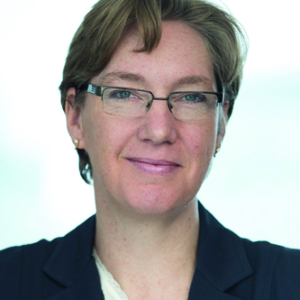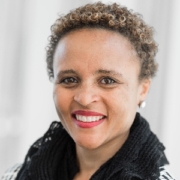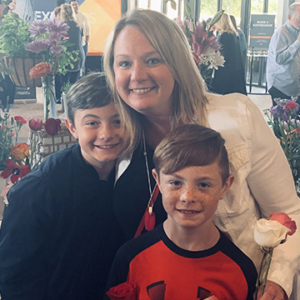Thought Leader: Deborah Lorenzen, Managing Director & Chief Operating Officer, Global Product & Marketing; State Street Global Advisors
 To Deborah Lorenzen, talent is everything for a business’ success.
To Deborah Lorenzen, talent is everything for a business’ success.
Since 2008, acquiring talent in the financial services sector has largely been a buyer’s market, where it’s been easier for firms to pick and choose the talent they want to bring in. Consequently, they haven’t had to spend as much time or effort making sure people are enthusiastic about joining the firm. But, says Lorenzen, savvy firms know they need to be prepared for the next cycle, which she calls the “War for Talent.”
“We can dramatically improve the front end of our hiring process, but we don’t spend enough time on it,” she says.To that end, she is currently focused on improving three different phases of the talent acquisition cycle.
Making Job Descriptions More Inclusive
First, she says that job descriptions need an overhaul, recommending that they be stripped of corporate speak and made more gender neutral. “Beyond articulating the job requirements, job descriptions are a marketing document, since they are read by hundreds of people who never even apply,” she says. “The majority of those who read them are people in my industry, and I want to leave them with a positive impression of my company.”
One remedy is tools that use an analytical perspective to identify which words attract which people by mapping the factors of a job description that ultimately led to a certain type of hire.
Entering existing job descriptions into the tool yields instant feedback, such as which words are likely to attract female or male candidates, which can then be used to incorporate more balanced verbiage. One lesser-known fact is that if your job description is filled with acronyms, research shows that men are more likely to apply even if they don’t understand the corporate jargon.
“We’re excluding large swaths of the population by how we word things,” Lorenzen says.
Maintaining Consistency Throughout the Interview Process
While competency-based interviews have become the norm, there is still a need to improve consistency. To that end, Lorenzen has helped create tools that lead to better interviews. Managers can quickly select the key competencies for the job they are filling, which brings up a set of pre-worded questions that will give them insight into candidates by prompting specific, measurable examples specific to that skill, such as “Give me an example of a time that you displayed teamwork.” For a trait such as global acumen, managers can choose different questions based on the depth of expertise required by the position level.
After key questions are chosen and position specific questions are added, the manager then can print out the job interview form and use it consistently with all of their candidates. “It allows them to compare apples to apples rather than having different experiences with different people,” she says. “The tools should be intuitive so we set our managers up for success.”
Pre-boarding for Success
In the United States, there is typically a two-week lag from when someone accepts the job until they actually start. In other parts of the world, people might have up to 90 days, a lengthy transition period when companies must engage with their future employees throughout the gap.
Among the support her division supplies are links to company information, “acronym decoders” and details on what to expect the first day. “This is about emotional engagement, so our new hires believe they have made the best decision of their career.”
For example, new employees will learn what to expect on the first day, and what activities to expect in the first 10 days. Setting expectations improves time-to-productivity, which is a key metric for the business.
Another key component of pre-boarding is discussing the wide variety of Employee Resource Groups available. “We want them to know that our company is proud of our diversity and whatever their gender, orientation, culture or background, there’s someone like them here already.”
Data Analytics Drive Decisions
In addition to a focus on better hiring, Lorenzen is immersed in technology infrastructure and data analytics. “Data is the key to understanding both our current environment and our next move,” she says. We can use data to identify products which are high performers and which aren’t meeting expectations, and track those products in real time.
Since decision science is a relatively new field, Lorenzen and her team are constantly tasked with finding the best talent. “They have to come in with diversity of thought, which comes from diversity of experience,” she says. “We must have a variety of perspectives in the room since there’s constant demand to improve the technology architecture.”
A Word for Women
Finally, Lorenzen believes that women have a special role in the industry to help others. And while she sees this as a responsibility, the rewards are mutual. “It gives me great joy to watch young people come up in the organization,” she says.
And she adds, there are few industries that are more competitive. “People are always going to be looking to take you out, but it’s not because you’re a girl, it is because you are competition. We need to raise our voices, as uncomfortable and dangerous as it can feel, when we see bias.” Why? Because for our businesses to thrive in this rapidly changing landscape we need the smartest, most innovative team we can muster, which by definition brings a diversity of thought to the table. This is an obligation for senior executives, including women.
The views expressed in this material are the views of Deborah Lorenzen of State Street Global Advisors through the period ended April 13, 2016.
The whole or any part of this work may not be reproduced, copied or transmitted or any of its contents disclosed to third parties without State Street express written consent.
State Street Corporation, One Lincoln Street, Boston, MA 02111-2900
© 2016 State Street Corporation – All Rights Reserved











